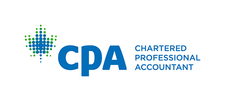What is a section 85 rollover? Many individuals start their businesses as sole proprietors keeping their legal and tax compliance costs low until the business gets off the ground and starts producing income. To start the business, the individual would generally need to purchase assets or they might build a client list. When the business owner decides to incorporate their assets and client lists may be worth more than what was originally paid.
The CRA requires the asset to be sold at its current fair market value to transfer the assets into the company. This means the business owner would incur a capital gain on the transfer taxable to them personally. Section 85 rollovers are helpful because this election allows the business owner to transfer the assets to the corporation tax-free. In addition, it will enable the business to purchase the assets at the original purchase price rather than the current fair market value.
Conditions required to perform a section 85 rollover
Basic conditions are required to be eligible for a section 85 rollover. These conditions are the following:
- The taxpayer transferring the asset must be an individual, corporation, or trust.
- The taxpayer receiving the transfer must be a taxable Canadian corporation.
- The assets rolled over must be eligible property, for example, depreciable capital property (building), non-depreciable capital property (goodwill), Canadian or foreign resource properties (a right to drill for petroleum), and inventories.
- The payment (consideration) from the company for receiving the transferred asset must include at least one share of capital stock. It must be equal to the asset’s fair market value.
- An election using form T2057 must be filed by one taxpayer. The taxpayer who should file is based on who has the earliest deadline for the year the transfer occurs. For example, a corporation six months after year-end or an individual on April 30th.
What assets should you and shouldn’t you rollover
The assets that should be rollover are those that have increased in value. For example, if the land was purchased for $100,000 and the fair market value is currently $300,000. Capital property such as goodwill and customer lists are assets for which the taxpayer may not have paid anything but are now worth more due to hard work. In addition, the inventory that the value has increased since they were initially purchased. These assets would be suitable for a section 85 rollover to defer taxation when the assets are transferred to a corporation.
Assets that shouldn’t be rolled over have decreased in value or remain the same value. For example, accounts receivable would unlikely increase in value over time. In many situations, it would decrease in value if amounts became uncollectible, so a section rollover would not be suitable for this type of asset.
Example
Charlotte is a self-employed consultant that has been very successful. Her business has grown significantly, and she’s now earning more than she requires for living expenses. Her accountant advised her that incorporation could benefit her for tax deferral purposes. Charlotte’s assets used in the business are in the table below.
| Asset | Fair Market Value | Initial Purchase Price | Depreciated value today |
| Cash | $20,000 | $20,000 | N/A |
| Building | $300,000 | $100,000 | $75,000 |
| Land | $100,000 | $50,000 | $50,000 |
| Computers | $1,000 | $3,000 | $2,000 |
| Furniture | $500 | $2,000 | $800 |
| Client list | $150,000 | 0 | N/A |
| Accounts receivable | $15,000 | $16,000 | N/A |
When Charlotte incorporates, she’ll require these assets to run the business. However, if she transfers these assets to her company, she will incur tax on any resulting capital gains. A section 85 rollover can be used to avoid triggering the tax.
As previously mentioned, a section 85 rollover would not benefit all assets, and only eligible property can be transferred. For example, accounts receivables and cash are not eligible property. In addition, the furniture and computers are eligible property that has not increased in value, so they would not be suitable for the election.
The following table outlines the assets that would form part of the election and how it would proceed:
| Asset | Tax Value | Elected amount | Boot (non-share consideration) | Share | Total |
| Building | $75,000 | $75,000 | $75,000 | $225,000 | $300,000 |
| Land | $50,000 | $50,000 | $50,000 | $50,000 | $100,000 |
| Client list | $0 | $1 | $0 | $150,000 | $150,000 |
| Total | $125,000 | $125,001 | $125,000 | $425,000 | $550,000 |
It is required that the lower of cost and depreciated amount be the elected amount for the capital property. A zero-dollar elected amount is not allowed for this election, so the client list elected amount has to be set as $1.
As a result of the section 85 rollover, the following assets will be transferred into the company at their tax values/initial cost, and no gain will be triggered by Charlotte personally. In addition, she will receive non-share consideration (i.e., promissory note) totaling $125,000 and 425,000 shares of the company worth $1 each.
Conclusion
Section 85 rollovers can be very beneficial, especially in situations as discussed above for Charlotte when a self-employed individual is incorporated and wants to transfer the business’s assets into the corporation. In addition, this election allows for a tax deferral for the eligible capital property that has appreciated since it was initially purchased.
Discover how Section 85 rollover can benefit your business. Schedule your free strategy session now!.
The content of this article is intended to provide a general guide to the subject matter. Specialist advice should be sought about your specific circumstances.

